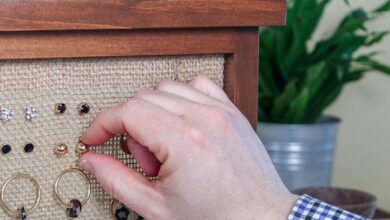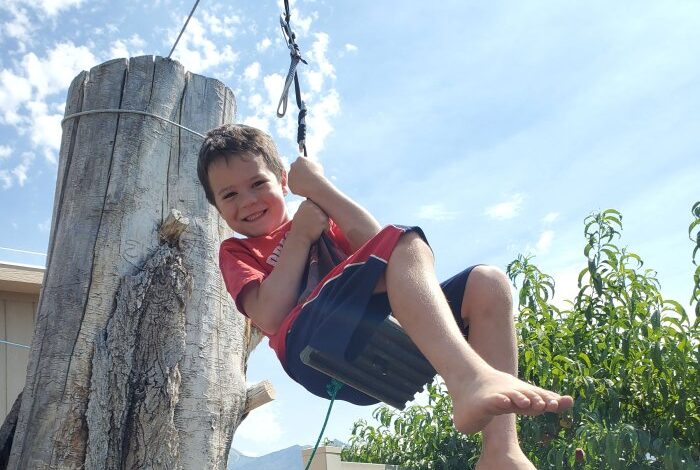
Build Your Own Zip Line in Your Backyard: A Thrilling DIY Project
Build your own zip line in your backyard sets the stage for an exhilarating DIY project, transforming your outdoor space into a thrilling adventure zone. This guide will take you step-by-step through the process, from planning and safety considerations to choosing materials, designing the zip line, and installing it securely.
Whether you’re a seasoned DIY enthusiast or a novice looking for a fun and challenging project, this comprehensive guide will equip you with the knowledge and tools to create your very own backyard zip line.
Imagine soaring through the air, feeling the wind in your hair as you zip from one end of your backyard to the other. This exhilarating experience is within your reach with a little planning, effort, and the right materials. With this guide, you’ll learn how to design and build a safe and functional zip line that will provide endless hours of entertainment for you and your family.
Safety First
Building your own zip line in your backyard can be an exciting project, but it’s crucial to prioritize safety throughout the entire process. A zip line, while seemingly simple, can pose significant risks if not designed and constructed correctly.
Potential Hazards and Risks
A backyard zip line, if not properly planned and executed, can present several potential hazards and risks. These can include:
- Falls:The most obvious risk is falling from the zip line itself, either during takeoff, landing, or due to equipment failure.
- Collisions:Collisions with trees, obstacles, or other objects in the path of the zip line can lead to serious injuries.
- Head Injuries:Impacting a tree or other object at speed can cause severe head injuries, highlighting the importance of helmets.
- Sprains and Fractures:Sudden stops or impacts can lead to sprains and fractures, especially in the wrists, ankles, and knees.
- Equipment Failure:Malfunctioning brakes, faulty harnesses, or worn-out cables can lead to catastrophic accidents.
Essential Safety Equipment
To mitigate these risks, investing in high-quality safety equipment is paramount. This includes:
- Helmets:A certified helmet is essential to protect the head from impact during a fall or collision.
- Harnesses:A full-body harness, designed specifically for zip lines, ensures a secure connection to the cable.
- Braking Systems:A reliable braking system is crucial for controlled descents and safe stops. This can include hand brakes, automatic brakes, or a combination of both.
- Cable:Use a high-strength cable specifically designed for zip lines, with a safety factor of at least 5:1.
- Anchors:Secure anchors at both the starting and ending points are essential to support the weight of the zip line and rider.
Selecting a Safe Location
Choosing the right location in your backyard is critical for minimizing risks and maximizing safety. Consider these factors:
- Clear Path:Ensure a clear, unobstructed path for the zip line, free from trees, obstacles, and power lines.
- Landing Area:Select a safe landing area that is clear, soft, and free from hazards.
- Tree Selection:Choose strong, healthy trees with sturdy branches for anchors, avoiding dead or decaying trees.
- Slope:A slight downward slope is ideal for a zip line, but avoid steep inclines that can lead to excessive speed.
- Distance:Consider the distance of the zip line, ensuring it’s long enough for a safe and enjoyable ride, but not too long that it becomes unsafe.
Developing a Safety Plan
A comprehensive safety plan is essential for ensuring the safe operation of your backyard zip line. This plan should include:
- Emergency Procedures:Establish clear emergency procedures in case of accidents or injuries, including contact information for emergency services.
- First Aid Protocols:Ensure someone on site is trained in basic first aid to provide immediate assistance in case of an emergency.
- Inspection Routine:Regularly inspect all equipment, including the cable, harnesses, and brakes, for wear and tear or damage.
- Safety Rules:Develop and communicate clear safety rules to all riders, including the importance of wearing helmets and harnesses, staying clear of obstacles, and using proper braking techniques.
Choosing the Right Materials
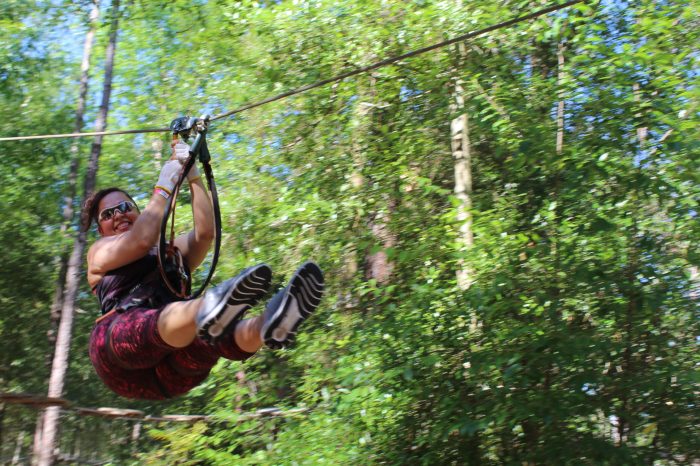
Building a zip line requires careful selection of materials that are strong, durable, and safe. The right materials will ensure a thrilling experience while prioritizing safety.
Cables and Ropes
The cable or rope is the heart of your zip line, bearing the weight of the rider. Selecting the right one is crucial.
- Steel Cable:Steel cables are known for their exceptional strength and durability. They are typically made of galvanized steel, offering resistance to rust and corrosion. Steel cables are ideal for high-weight capacity zip lines and can withstand harsh weather conditions. However, they are heavier than other options and can be more expensive.
- Wire Rope:Similar to steel cables, wire ropes are made of multiple strands of wire woven together. They offer excellent strength and durability, making them suitable for high-load applications. They are generally more flexible than steel cables, allowing for easier installation.
- Nylon Rope:Nylon ropes are lighter and more flexible than steel cables, making them easier to handle and install. They are also relatively inexpensive. However, nylon ropes have a lower tensile strength than steel cables, limiting their weight capacity. Nylon ropes are better suited for lighter zip lines or those with shorter distances.
Building your own zip line in the backyard is a great way to add some excitement to your outdoor space. It’s a project that can be as simple or as complex as you like, and it’s a fun way to get the kids (and adults!) moving.
For a little extra flair, consider adding some fun details to your zip line, like a pinkalicious bottle cap necklace pinkalicious bottle cap necklace to add some color and personality to your creation. Whether you go all out with a fancy zip line or just a simple rope swing, it’s sure to be a hit with everyone.
- Polyester Rope:Polyester ropes offer a good balance of strength and flexibility. They are resistant to abrasion and UV damage, making them suitable for outdoor use. They are also less likely to stretch under load compared to nylon ropes. Polyester ropes are a good choice for medium-weight capacity zip lines.
When choosing a cable or rope, consider the weight capacity, distance, and intended use of your zip line. For a high-weight capacity zip line, steel cable is the most reliable option. For lighter zip lines, nylon or polyester ropes can be suitable.
Hardware
Selecting the right hardware is essential for a safe and functional zip line.
Building your own zip line in your backyard can be a fun and exciting project, but it’s important to prioritize safety. You’ll need sturdy materials like rope and pulleys, and you can even add a bit of flair with some decorative touches like ruffled party streamers for a whimsical feel.
Just make sure you secure everything properly, and always wear appropriate safety gear when zipping through the air.
- Pulleys:Pulleys are essential for guiding the cable and reducing friction during the ride. They should be made of high-quality materials, such as stainless steel or aluminum, to withstand wear and tear. The size of the pulley should be appropriate for the diameter of the cable or rope.
Building a zip line in your backyard is a fantastic way to create lasting memories with your family. It’s a fun, adventurous activity that can be enjoyed by all ages. And since it’s a DIY project, it can be a great way to bring the family together for some quality time and to create something special.
If you’re looking for some more fun, frugal family Christmas traditions, check out this awesome article: fun frugal family Christmas traditions. Once you’ve built your zip line, you can make it a festive tradition to take a ride on Christmas morning! Just be sure to use sturdy materials and follow safety guidelines to ensure everyone has a safe and enjoyable experience.
- Carabiners:Carabiners are used to connect the rider to the cable or rope. They should be made of high-quality, lightweight materials like aluminum or stainless steel. Choose carabiners with a high strength-to-weight ratio and a locking mechanism for added safety.
- Anchors:Anchors are used to secure the cable or rope at the starting and ending points of the zip line. The anchors should be strong enough to support the weight of the rider and the tension on the cable. Consider using anchors that are specifically designed for zip lines and meet safety standards.
Always choose hardware that is rated for the intended use and weight capacity of your zip line.
Material Quality and Sourcing
- High-Quality Materials:Use only high-quality, weather-resistant materials for your zip line. This ensures durability, safety, and longevity. Materials like stainless steel, galvanized steel, and UV-resistant ropes are preferred.
- Reputable Suppliers:Source your materials from reputable suppliers who offer quality products and meet safety standards. Look for suppliers specializing in zip line hardware and materials.
- Safety Standards:Ensure that all materials meet the relevant safety standards. Check for certifications and labels from reputable organizations. This ensures that the materials are tested and approved for use in zip line construction.
Weight Capacity, Build your own zip line in your backyard
- Rider Weight:Consider the maximum weight capacity of the zip line based on the rider’s weight. The cable or rope, hardware, and anchors should be rated to handle the maximum weight. A safety factor of 2:1 or higher is recommended, meaning the system should be able to handle twice the maximum intended weight.
- Zip Line Length:The length of the zip line also influences the weight capacity. Longer zip lines require stronger cables or ropes to handle the increased tension.
- Slope:The slope of the zip line affects the tension on the cable or rope. Steeper slopes result in higher tension, requiring a higher weight capacity.
Designing Your Zip Line: Build Your Own Zip Line In Your Backyard
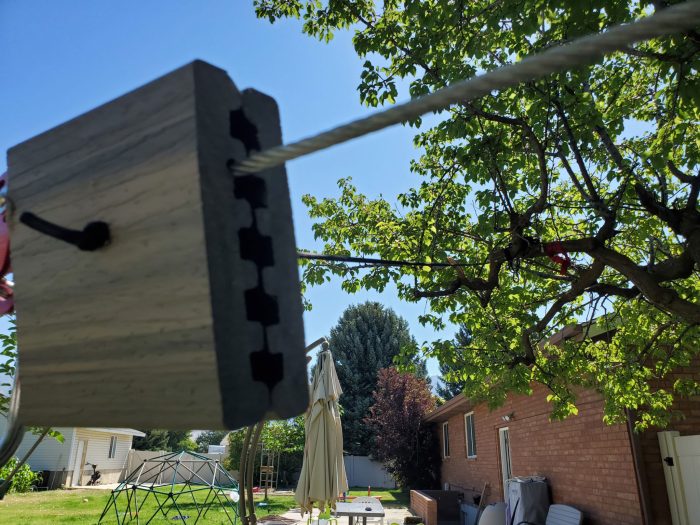
Now that you’ve gathered your materials and ensured safety is top of mind, it’s time to design your zip line. This stage involves determining the configuration, calculating the length and slope, and understanding the role of height and elevation.
Zip Line Configurations
The layout of your zip line depends on your backyard’s size and shape, as well as your desired experience. Here are a few common configurations:
- Straight Line:This is the simplest and most common configuration, offering a straightforward and exhilarating ride. It involves a straight line between two anchor points.
- Curved Line:This configuration adds a twist to the ride, with a gentle curve or even a sharp turn. It requires additional support structures to maintain the desired curve and ensure safety.
- Multiple Towers:This configuration offers the most complex and challenging ride. It involves multiple towers connected by zip line segments, creating a series of exhilarating drops and turns.
Calculating Length and Slope
The length and slope of your zip line are crucial for determining the speed and overall experience. Here’s how to calculate them:
- Length:Measure the distance between your chosen anchor points. This distance represents the length of your zip line.
- Slope:The slope is the difference in elevation between the starting and ending points. A steeper slope results in a faster ride. To calculate the slope, divide the difference in elevation by the length of the zip line. For example, if the elevation difference is 10 feet and the length is 50 feet, the slope is 0.2 (10/50 = 0.2).
Height and Elevation
The height of your zip line plays a significant role in determining the overall experience. A higher starting point results in a faster and more thrilling ride. However, safety is paramount, so it’s crucial to consider the following:
- Minimum Height:Ensure there is sufficient clearance between the zip line and any obstacles, such as trees, buildings, or power lines. A minimum clearance of 10 feet is generally recommended.
- Elevation Difference:The elevation difference between the starting and ending points determines the speed and excitement of the ride. A larger difference creates a faster and more exhilarating ride. However, it’s essential to ensure that the elevation difference is within safe limits and that the slope is not too steep.
Typical Backyard Zip Line Setup
Imagine a backyard with a 50-foot distance between two trees. The starting point is on a platform 15 feet above ground, while the ending point is 5 feet above ground. This creates an elevation difference of 10 feet (155 = 10).
The zip line is suspended between the two trees, with a cable running through pulleys attached to the trees. A brake system is installed at the end to safely slow the rider down. The entire setup is designed to provide a thrilling and safe ride.
Calculating Materials and Hardware
Once you’ve determined the configuration, length, and slope, you can calculate the required materials and hardware:
- Cable:The length of the cable should be slightly longer than the zip line’s length to account for sag. The cable’s diameter depends on the weight capacity and the desired speed. For a typical backyard zip line, a 5/16-inch diameter cable is commonly used.
- Pulleys:The number of pulleys depends on the configuration. For a straight line, two pulleys are needed, one at each anchor point. For curved lines and multiple towers, additional pulleys may be required.
- Hardware:This includes various fasteners, such as shackles, turnbuckles, and carabiners. The specific hardware required depends on the chosen configuration and materials.
- Braking System:A braking system is essential for safely slowing the rider down at the end of the zip line. There are various braking systems available, including friction brakes and automatic braking systems. The chosen braking system should be appropriate for the weight capacity and speed of the zip line.
Construction and Installation
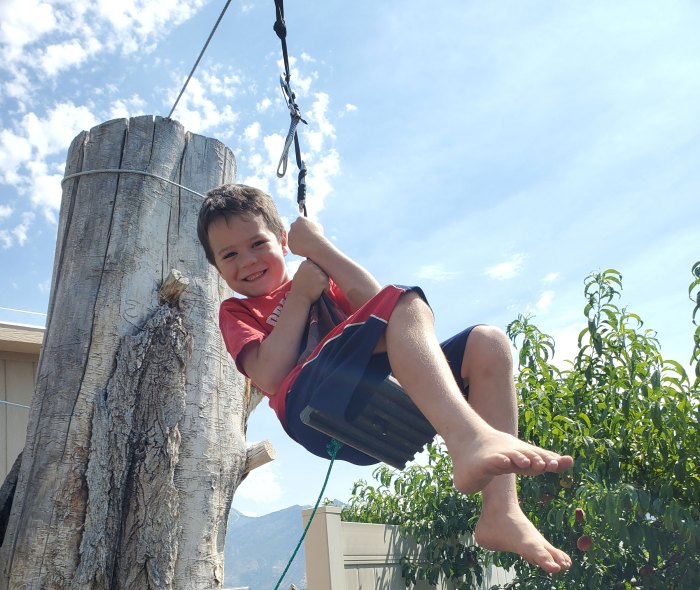
Now that you have your materials and design ready, it’s time to get your hands dirty and start building! This section will guide you through the process of installing your zip line, ensuring safety and proper functionality.
Installing the Anchor Points
The anchor points are the most critical components of your zip line. They hold the cable and ensure it remains securely in place.
- Choosing the Right Anchor Points:You need sturdy, strong, and reliable anchor points that can withstand the weight and force of the zip line. Ideal options include large, strong trees, sturdy beams, or purpose-built anchor structures designed for zip lines.
- Securing the Anchor Points:Once you’ve selected your anchor points, you need to secure them firmly. For trees, use heavy-duty straps or specialized tree-friendly anchors. For beams or structures, use heavy-duty bolts, brackets, or other anchoring methods suitable for the material and load capacity.
- Ensuring Proper Placement:The anchor points must be positioned at the correct height and distance apart to ensure a safe and enjoyable zip line experience. Ensure a sufficient slope for a smooth and controlled descent.
Attaching the Cable or Rope
Once your anchor points are secured, you need to attach the cable or rope to them. This step requires careful attention to detail to ensure proper tension and alignment.
- Using the Right Hardware:Use heavy-duty shackles, turnbuckles, or other appropriate hardware designed for zip lines to connect the cable or rope to the anchor points.
- Adjusting Tension:Adjust the tension of the cable or rope using the turnbuckles. Proper tension is crucial for a smooth and safe ride. You should aim for a slight sag in the cable or rope when the zip line is not in use.
Too much tension can make the ride uncomfortable and potentially dangerous, while too little tension can cause the cable to sag excessively.
- Ensuring Alignment:Make sure the cable or rope is perfectly aligned between the anchor points. Any misalignment can cause uneven wear and tear on the cable or rope, potentially leading to safety hazards.
Setting Up the Braking System
A braking system is essential for safely controlling your descent on the zip line. It allows you to slow down and stop at the end of the ride.
- Types of Braking Systems:There are several types of braking systems used for zip lines, including friction brakes, hand brakes, and automatic braking systems. Choose a system that is appropriate for your zip line and your skill level.
- Installing the Braking System:Install the braking system according to the manufacturer’s instructions. Ensure it is securely attached to the cable or rope and that it functions correctly.
- Testing the Braking System:Before using the zip line, test the braking system thoroughly to ensure it is working properly. Make sure the braking system can slow you down and stop you safely at the end of the ride.
Testing the Zip Line
Before anyone uses your zip line, it’s essential to test it thoroughly to ensure all components are securely attached and functioning correctly.
- Conduct a Visual Inspection:Carefully inspect all components of the zip line, including the anchor points, cable or rope, braking system, and any other hardware. Look for any signs of damage, wear, or loose connections.
- Perform a Functional Test:Test the zip line by sending a weighted object, such as a sandbag or a heavy bag, down the line. This will help you identify any potential issues with the cable or rope, anchor points, or braking system.
- Test the Braking System:Test the braking system by using the weighted object and applying the brakes at different points along the zip line. Ensure the braking system can slow down and stop the weighted object safely.
Tools and Equipment
To construct and install your zip line, you’ll need the following tools and equipment:
- Measuring Tape:For accurately measuring distances and determining the proper length of the cable or rope.
- Level:For ensuring that the anchor points are level and that the cable or rope is aligned correctly.
- Wrench Set:For tightening bolts, nuts, and other hardware.
- Drill:For drilling holes in wood or other materials for installing anchor points or hardware.
- Screwdriver:For attaching hardware and making adjustments.
- Safety Glasses:For protecting your eyes from flying debris or particles.
- Work Gloves:For protecting your hands from sharp edges or rough materials.
- Ladder:For accessing high anchor points.





